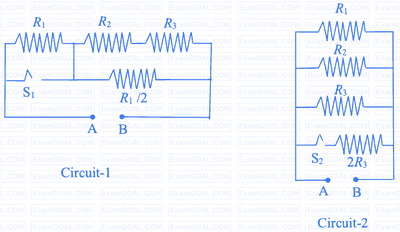
An object and a concave mirror of focal length $f=10 \mathrm{~cm}$ both move along the principal axis of the mirror with constant speeds. The object moves with speed $V_{0}=15 \mathrm{~cm} \mathrm{~s}^{-1}$ towards the mirror with respect to a laboratory frame. The distance between the object and the mirror at a given moment is denoted by $u$. When $u=30 \mathrm{~cm}$, the speed of the mirror $V_{m}$ is such that the image is instantaneously at rest with respect to the laboratory frame, and the object forms a real image. The magnitude of $V_{m}$ is _________ $\mathrm{cm} \,\mathrm{s}^{-1}$.


In the figure, the inner (shaded) region $A$ represents a sphere of radius $r_{A}=1$, within which the electrostatic charge density varies with the radial distance $r$ from the center as $\rho_{A}=k r$, where $k$ is positive. In the spherical shell $B$ of outer radius $r_{B}$, the electrostatic charge density varies as $\rho_{B}=$ $\frac{2 k}{r}$. Assume that dimensions are taken care of. All physical quantities are in their SI units.

Which of the following statement(s) is(are) correct?

$P_{1}$ and $P_{2}$ are the power dissipations in Circuit-1 and Circuit-2 when the switches $\mathrm{S}_{1}$ and $\mathrm{S}_{2}$ are in open conditions, respectively.
$Q_{1}$ and $Q_{2}$ are the power dissipations in Circuit-1 and Circuit-2 when the switches $\mathrm{S}_{1}$ and $\mathrm{S}_{2}$ are in closed conditions, respectively.

Which of the following statement(s) is(are) correct?

Which of the following statement(s) is(are) correct?